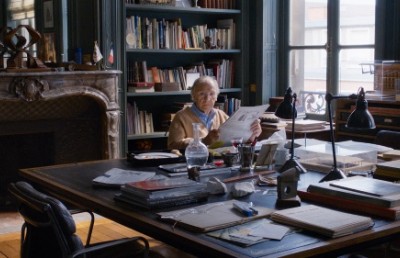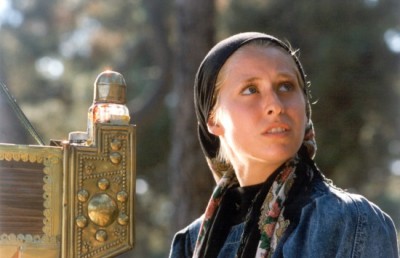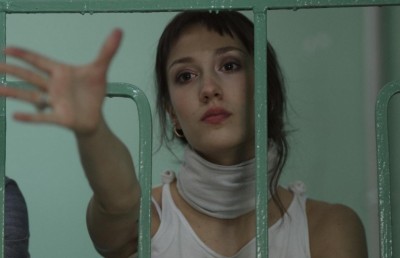Vicariously Violent: The Case of Lav Diaz’s From What Is Before
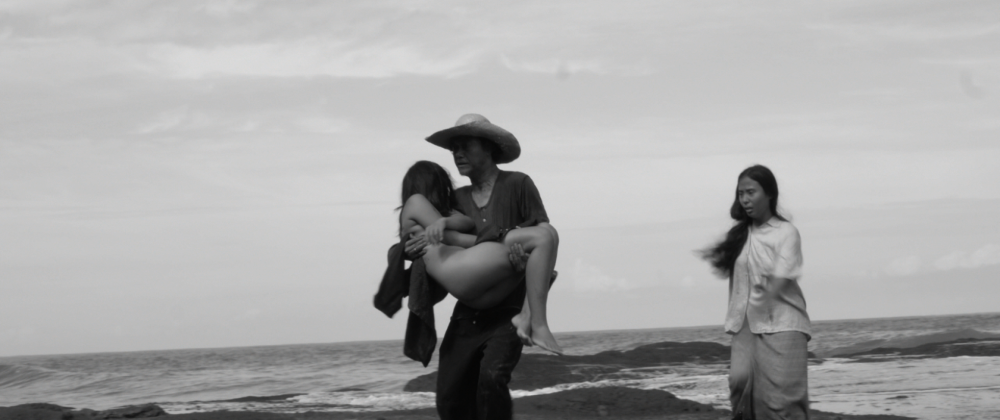
The first thing that stick to my mind after watching From What Is Before (Mula sa Kung Ano ang Noon) (Lav Diaz, 2014), the recipient of the Golden Leopard of the Locarno International Film Festival, was the curious way in which a government can simply displace people by the mere presence of military forces in a region that leads to the gradual disintegration of the small rural society. Filmed at an actual Filipino village that in 2013 still had a Sixties/early-Seventies kind of look, 1 Mula’s narrative unravels during the two years before the declaration of martial law by Ferdinand Markos in the Philippines on September 21, 1972, and a little while after that. 2 In her doctoral thesis on the post-trauma cinema of Lav Diaz, 3 Nadin Mai asserts that Diaz himself considers Mula along with Batang West Side (2001) and Evolution of a Filipino Family (2004) as his Martial Law trilogy (Mai 54).
In Mula, Diaz uses the medium of cinema as a testimony (albeit fictional) to what has happened before by exploring his childhood memories of living in a faraway barrio at a cataclysmic time which culminated in the declaration of Martial Law. Aptly named From What Is Before, Mula sa Kung Ano ang Noon demonstrates the surreptitious forces at play inside and outside of a rural society which works their way to disentangle the cohesive web of societal relations, relations that were able to keep the barrio alive for many years up to when that moment in history arrives when the military puts Marcos’s initial plan (for preparing the general public for Martial Law) into action.
Violence is an issue that Diaz daringly tackles in Mula, and his distinctive way of approaching it is worthy of investigation. Not showing the scenes of violence, either in real time or flashback, is a characteristic of Diaz’s work. In her doctoral thesis, Nadin Mai explores Diaz’s choice of “the conveyance of violence through dialogue and sound, and the inherent absence of violent imagery” in the movies Death in the Land of Encantos (2007), Melancholia (2008), Florentina Hubaldo, CTE (2012). 4 In this essay, first I will explore this refrain from showing the dramatic moments of violence in Mula by scrutinizing examples of violence in which tangible physical injury is involved, in addition to the mental repercussions for the people who perpetrate, endure, or witness it (either the characters in Mula or the audience of the movie). Subsequently, I will address the relation between violence and fear in Mula, and then briefly introduce the other ways in which the emotion of fear is introduced in the narrative.
The camera is fixed during most of the shots in Mula. The few shots in which the camera moves are the ones during which a character is walking, although there are also many sequences involving the characters’ walking in which the camera is immobile. Maintaining the attentive look of the camera without any movement allows for the subtle happenings (both image-wise and sound wise) in each shot to seep into the consciousness of the observant viewer. In his review of Mula, Adam Nayman reasonably claims that “the placement of the camera is precise enough that certain set-ups slowly reveal hidden depths or planes of action, but for the most part, the shots are plain and unadorned, eschewing camera gymnastics for sustained, stationary observation.” This is of great significance for the instances of violence in Mula examined in this article. I will highlight the camera’s lingering over these scenes by providing their duration in each case.
_630_354_90.jpg)
Fig. 1. Alluding to violence using ambiguous imagery: two huts burning at night.
The first instance of violence in Mula is an indirect and ambiguous imagery of violence: the static long take showing two huts burning at night (Fig. 1). The ambiguity of this imagery is intensified by the fact that up to that point in Mula (roughly half an hour into the film) the viewer is given no clue as of what this burning of the huts at night might mean; whether the fire is a consequence of carelessness or whether it was set on purpose. Only later do we learn that this burning has in fact been a result of arson: a sheer violence perpetrated on the people living in those huts, damaging their properties and also their morale through trauma. And if the huts were uninhabited, the arson can still be seen as a means to introduce fear in the psyche of the barrio. Hearing the characters talk about the incidence later in the film, viewers come to the conclusion that the fire has been an instance of arson. But during the scene – which is also a good example of slowing down the tempo of a film in Diaz’s repertoire of slow cinema, lasting one minute and 48 seconds and comprising of only one static shot –we neither see the arsonists nor the people who might have been living in the two huts that are burning.
_630_354_90.jpg)
Fig. 2. Performing the Malay ritual of lamentation for the dead
The next example of violence is the death of Lamalan, a man not seen in the film, but who is the son of a minor female character. We see neither his death nor his corpse. We learn of his death when his mother comes to Sito and Itang (in the middle of a scene in which they are gathering medicinal herbs in the forest) crying “My son, Lamalan!” This is the first we hear of the absent character named Lamalan. Forty seconds pass, during which Sito and Itang try to calm her down, until the mother in her agony finally declares “They killed my son!” The main characters sympathizing continues for nearly fifty seconds at the end of which the scene cuts to a gathering around the mother who performs a Malay tradition of lamenting through singing about the death of his son (Fig. 2). (The two scenes are two of the many examples of static (comprising of only one shot) long takes in Diaz’s slow aesthetics; the first taking up three minutes and 40 seconds, and the second (ritual mourning) lasting for five minutes and 45 seconds.) In this instance of violence, like the first example (the burning huts), the viewer is again deprived of witnessing the violence on screen. The violence of a human being murdered is only talked about and lamented.
_630_354_90.jpg)
Fig. 3. The corpse watched over by three people
The severely injured body of the man found at the crossing is the first instance of showing horrifying violence on screen in Mula (Fig. 3). The static 45-second long take of the body on the stony road, recorded in Dutch angle (with its own implications), renders the gruesome wound on his neck fairly obvious. Yet, the perpetration of this violence on the man is elided. By avoiding to show the face of the corpse, Diaz manages to keep the emotions of the viewer in check, as it is the face of a victim (especially a dead person) that has a greater ability to affect the audience. Diaz also avoids showing the faces of the three people who gather around the dead man, and in this way he again avoids manipulating the spectator by showing them how they are supposed to feel through the facial expressions of the three witnesses.
Employing the Dutch angle in the single shot of this scene is key in letting the viewer know that this is no ordinary murder. Dutch angle is “generally used to give an overwhelming sense of the world’s being unbalanced or out of kilter.” (Mamer 9) Throughout Mula, this is the only example of using the Dutch angle, and it is in stark difference from all the shots of the movie. Consequently, it is more capable of conveying the overwhelm in Mula’s narrative as a result of this unexplainable death. It is not a point-of-view shot so it doesn’t imply the mentality of a specific character; rather, Diaz utilizes the canted angle as a metaphor for the disturbed psyche of the people of the village in their entirety. As the narrative unfolds we see how the enigma of this murder remains alive in the minds of villagers and most probably empowers the fear which finally leads to their evacuating the village in search of peace. 5
_630_354_90.jpg)
Fig. 4. Talking about the enigmatic hacking of the cows
The hacking of the cows is the next example of violence in Mula which is not shown on screen. The viewer is informed of this brutality in a static long take (Fig. 4) starting with Sito and Hacob sitting in the ranch as a cow is grazing near them. A man named Mariano (who, we learn through the dialogue, is the assistant of the owner of the cows) enters the scene and asks Sito about the hacking of the three cows in that week and informs him that he and Hacob are not employed any longer and shouldn’t report for work in the ranch. The scene ends with everybody exiting the frame (or on the way of leaving the shot) except the cow which is still grazing peacefully. Talking about an illegal, appalling act like the hacking of someone else’s cows is in sheer contrast with the location in which the dialogue is taking place: the beautiful, rainy tranquil ranch. Again, Diaz refrains from showing the violence. Rather, he deliberately chooses to rely on sound in the form of words or dialogue to let the viewer know what has been going on.
_630_354_90.jpg)
Fig. 5. Tony trying to get friendly with the mentally-ill Joselina as a prelude to sexually assaulting her
Joselina’s rape by Tony is the next instance of deliberately not conforming to what the viewer thinks he or she will see. Horror as a feeling which can comprise of both fear and disgust (Miller 26) is induced in the viewer by the prolongation of this sequence which consists of a static shot turning into a long take of four minutes and 45 seconds (Fig. 5). The viewer is horrified by what Tony the winemaker does to the defenseless Joselina without her conscious consent. The arousing of horror in the viewer (by Tony’s sexual yet pre-intercourse advances) is achieved slowly, precisely because of the indolence of the camera, which only acts as a witness, documenting the moments leading to the appalling atrocity imposed on Joselina. The horror intensifies as time passes and its peak is right at the end of the sequence where the viewer is deprived of witnessing the rest of the scene, i.e. the violent act of rape itself. The effect of this sequence on the viewer is accentuated by Diaz’ choice of cutting right at or very near to the moment where anal intercourse starts to take place. By not showing the rape itself, Diaz once more shows his predilection to not exploit the image of violence, but leave it to the viewer’s imagination.
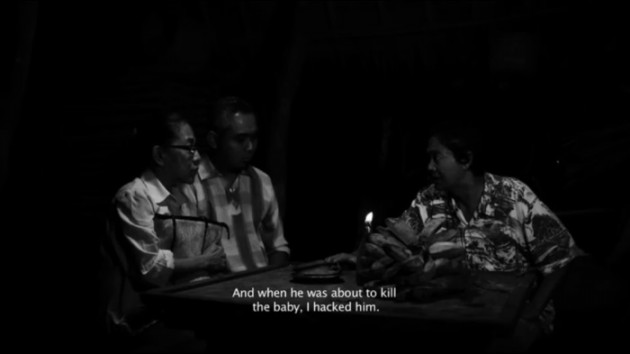
Fig. 6. Sito recounting the story of finding Hacob, when he was a newly born baby
The next instance of violence is represented through recounting with no use of flashback. In a long take consisting of only a single interior shot lasting eight minutes and 22 seconds (Fig. 6), Sito recites the true story of Hacob’s life and their living together for Hacob’s teacher and the school’s principal. He declares from his memory that eleven years ago he’s witnessed the killing of Hacob’s mother right after giving birth to the baby Hacob as the father of the child slashes her throat. When the father is about to kill the baby, Sito hacks him (which leads to his death), buries the two dead bodies in the forest, and takes the baby home. Once again, Diaz has chosen to deal with violence through the sound of a memory with words and no images. The work of visualizing the horrible act is again left to the viewer to reconstruct in their, mind’s eye. The experience of each viewer in this case and the case of Joselina’s rape is unique to his/her own, as people are different in the ability to delineate in their mind what they hear or what is alluded to. Depriving the viewer of actually seeing violent imagery, this scene stimulates the viewer’s imagination.
The next example of violence is the scene in which Itang beats up Heding (the woman lieutenant who acts as a blanket seller to perform her duties as a military secret agent). The scene begins with Itang walking past a yard when she hears hearsay about Joselina being the daughter of a Kapre, so she changes her direction and enters the yard in which Heding is doing laundry with other women and spreading fearful gossip about Joselina or her Kapre father being the one who hacked the cows and put the huts on fire. The moment when Itang attacks Heding from behind is shown on the screen. Yet, certainly on Diaz careful direction, Itang takes her into the hut and then starts beating her. The short open space between the wall and the roof of the hut allows the viewer to see the raging Itang apparently hitting Heding harshly, yet Heding cannot be seen at all. (Fig. 7) The severity of the beating can only be guessed through Itang’s partly visible gestures and Heding’s sobs and cries. After the beating Itang leaves the scene and Heding comes out of the hut with the help of other women. She throws up blood and stands there, full-height, in front of the camera for a few seconds after which the scene cuts to Sito and Hacob outside of their own hut in the forest away from the village. In line with the other scenes of violence, t Diaz has preferred to film only the before and after of a violent scene.
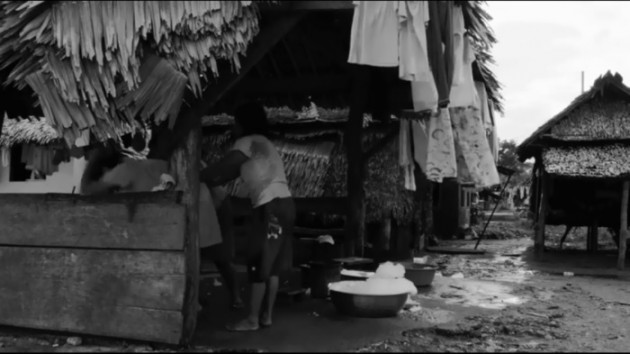
Fig. 7. Itang beating Heding (who cannot be seen) hard
Itang’s killing of Joselina and her suicide, is the next instance of Diaz’s refrain from dramatizing the scene through showing the exact moment of its happening. Itang is seen with Joselina in her arms standing still on the beach, yet again the viewer only witnesses the before and after of the act of suicide.
It should be noted that the few moments during and after the suicide do not include images of Itang running to the sea or Itang and Joselina’s bodies in the sea before or after their drowning. Those moments are dedicated to depicting the reaction of Father Guido to this tragic event; namely to the turmoil that he goes through at the moment of Itang’s running to the sea ( which the viewer never sees), to his running after Itang and stopping a few steps from the point at which the waves meet the shoreline where the viewer was Itang and Joselina for the last time, to his great remorse after the suicide which consists of a static long take of one minute and twelve seconds. (Fig. 8)

Fig. 8. Itang committing suicide. From left to right: Itang with Joselina in her arms at the beach, Father Guido starting to run to stop Itang (who apparently has started running into the sea), Father Guido crying and making the sign of the cross towards the sea
Itang’s suicide is mentioned in four occasions either directly or indirectly. These include two conversations – once in the confession shack in the church yard and another time at Tony’s hut – between Tony (who’s been its silent witness) and Father Guido (who has tried to keep it a secret), once between Hacob (who has also been a silent witness of the act) and Sito (as they are hunting in the forest), and a last time between Sito and Tony which culminates in the next instance of violence.
After hearing Tony talk about his relationship with Joselina and that she might have been pregnant with Tony’s child and how Itang could not tolerate this disgrace, Sito is horrified that Tony in his agonizing delirium might tell others about this. Sito attacks Tony from behind striking him heavily on the neck with a rock, as he is traversing the slope of a hill close to the shoreline. Tony falls down and becomes completely hidden from view behind the slope. The only visible part of the act of violence from this moment on is Sito’s hands raising the rock over his head and pounding the offscreen Tony a number of times. The exact inflicting of this violence occurs off screen. The viewer is again left to imagine what becomes of Tony’s face and head after such battering. (Fig. 9)

Fig. 9. Sito killing Tony. From left to right: Tony entering the scene, Sito going after him, Sito raising the stone over his head as he is battering Tony (after Tony’s fall as a result of the first blow which makes him hidden behind the slope).
Only two clues are offered to the viewer. The first visual clue is the strength of Sito’s blows. The second which is a lot subtler is Tony’s letting out of a very faint moan at the end of the beating which is mostly lost in the sound of the wind among the vegetation and the waves. In this sequence, which comprises of a static long take lasting one minute (beginning with Tony entering the scene, then Sito following him, and at last the beating), both soundscape and landscape play an important role in camouflaging the exact occurrence of violence, i.e. Tony’s body being heavily battered and his apparent death. The viewer is also deprived of seeing Tony’s dead body in the scenes that follow. He or she only has to assume that Sito has buried the corpse. Right after this sequence, Sito is shown again in a static long take of two minutes and 20 seconds mostly sitting (presumably at the spot where he has buried Tony) with a long face, seemingly in turmoil over what he has just done.
The next and last instance of violence in Mula is near the end of the film. Two young men are hanging from a tree by ropes around their waists. It is apparent from their lethargic postures that they have been brutally tortured. Then a woman member of the military unit comes and starts verbally humiliating them 6 This culminates in her torturing one of the men, who screams at the top of his voice for almost the whole 58 seconds of torture (Fig. 10). The viewer is deprived of seeing how the man is tortured, as the woman’s body standing in front of the hanging man hides what she’s doing to his body. Again, only minimal visual clue is given to the viewer. The soundscape carries a much more significant role in this scene, as the pain endured by the man is mirrored only in his distant shrieks. Though the viewer can see the man’s twisted face in this long take, it is not emphasized through close-up. 7

Fig. 10. A man is tortured by a member of the military
As scrutinized above, of the different instances of violence which take place in the narrative of Mula, none is utterly and conspicuously depicted on the screen. Either the before and after of the act of violence is shown, or the emphasis is on the sound rather than visuals (this also includes using the device of recounting one’s memories for others).
The most immediate emotion that the presence or possibility of violence stirs in witnesses is fear. Even the mere possibility of suffering as a result of physical violence in the future has the power to trigger fear in the likely victims. In her investigation of the affective politics of fear, Sara Ahmed asserts, “fear of ‘the world’ as the scene of a future injury works as a form of violence in the present” (Ahmed 70). This is the mental violence that the villagers go through initially by three of the ten instances of violence discussed earlier, namely the inexplicable burning down of the huts, the mysterious hacking of the cows, and the dead body at the crossroads. For the film’s audience, the feeling of fear becomes pervasive throughout Mula by all the instances of mostly deliberately-not-shown violence discussed in this essay. Despite the prevalence of this feeling in the film, the first direct mention of it is when Sito is talking to lieutenant Perdido (the head of the military unit installed in the barrio) over a cup of coffee some 228 minutes into the movie. “It’s just sad though, how people from this barrio are starting to evacuate. That’s primarily because of fear,” Sito says to the lieutenant after mentioning the mysterious events happening in the barrio and its vicinity during the past couple of months, namely cows mysteriously being hacked in the ranch, the burning down of three huts in just one night, frightening wails inside the forest, and a man found dead at the crossroads with bites on his neck and scratches on his torso. The lieutenant takes this opportunity to use Sito’s reasoning to justify the presence of military forces in the barrio, saying “Fear. That’s it, Sir Sito. That’s exactly why we’re here.” Yet Sito bravely elaborates his point by asserting that the fear had started to arise when people learned the military forces were coming to the barrio and were going to be installed there. Sito insists that people started evacuating the barrio by the mere knowledge of the imminent presence of the military in the place where they have lived for so many years, even for generations. In other words, the mental violence initiated by the feeling of fear (triggered by the enigmatic violent happenings) reached its peak by the news of the military heading to their village.
“Fear works to contain some bodies such that they take up less space” (Ahmed 70). This sense of containment is interpreted by Ahmed as shrinkage. Fear “restricts the body’s mobility precisely insofar as it seems to prepare the body for flight.” This shrinkage in the narrative of Mula works in two ways: each family either decides to leave the barrio to settle in some other place with no military presence (choosing flight which in a sense involves shrinking/escaping from the power of military) or to stay, abiding to the rule of military, which literally involves shrinkage of the remaining bodies as the social space becomes regulated by the introduction of martial law in the barrio first by lieutenant Perdido and later by Ferdinand Markos as he puts the whole country under martial law. The military succeeds in gaining control of the social space which leads to the disintegration of the rural society by thrusting fear upon people (fear of its presence and fear of the consequences of not respecting the martial law).
Another way in which fear is introduced into the narrative of Mula is the mentioning of Filipino mythical characters in order to give meaning to the unexplainable happenings. An example is when the woman spy, Heding, is shown spreading rumors about Joselina being the daughter of a Kapre. 8 Another example is when the death of the man found at the crossroads is attributed to Aswang, a creature very much like the vampire. 9
Fear is also alluded to by demonstration of sublimity: the grandeur of nature around the place where the village is located. This fear of the awe-inspiring natural habitat is represented in many occasions where Sito is heard saying words to drive the evil spirits away, and when he is not heard the movement of his hand is telling that he is doing so.
By looking closely at the instances of violence in the narrative of Mula, it becomes apparent that Diaz’s abstinence from wallowing in violent imagery is achieved by focusing image-wise on mostly the before and after of the definite act of violence, and in most instances giving a much more important role to the soundscape in order to convey the gruesomeness of the violence or even on just recounting it (e.g. in the case of Sito’s killing of Hacob’s Father). Maintaining the stationary position of the camera for an appreciable length of time on these situations not only is more likely to trigger the observant viewer’s imagination, but also allows him or her to brood over what the violence means with regard to the victims and perpetrators during each of the discussed cases. This bloating of time provides the opportunity for the viewer to ponder the violence in addition to the affective response that the act of violence or the knowledge of it most likely triggers in its witness.
In Mula, the Malay traditions and tales which has mostly been put aside and forgotten (except in rural and far away areas) after Christianity and Islam reached the shores of the Philippines are also put on display. The three specific examples of this which take an exemplary long screen time are the ritual dance for rain (almost six minutes), the mourning song about Lamalan, and the burning of a dead body as it is floating in a boat on a river (each of the two latter examples comprise only one shot with a duration of more than five minutes). Another example which is talked of and also shown at different moments in the movie is Itang and Joselina’s practice in healing people’s maladies which are believed to be caused by evil nature spirits. It should be noted that Mula, though a fiction film, is based on Diaz’s childhood memories. “The film is a recollection” Diaz asserts, and through making it he is also “trying to reclaim the past of the Philippines.” 10 In this way, the medium of film is used as a conveyor of national traditions which has been forced to stop in the face of colonialism. Perhaps demonstrating these ancient traditions using the medium of cinema can be looked at through the lens of historical anthropology —but that would be the subject of another essay on the brilliant work of Lav Diaz.
Works CitedSara Ahmed. The Cultural Politics of Emotion. 2nd edition, Edinburgh University Press, 2014.
Michael Guarneri. “The burden of history. A conversation with Lav Diaz.” (conducted in Locarno, August 8th 2014) La Furia Umana 21. Available at: (accessed 20 April 2017)
Nadin Mai. The aesthetics of absence and duration in the post-trauma cinema of Lav Diaz. PhD thesis, The University of Stirling, Division of Communication, Media and Culture, July 2015.
Bruce Mamer. Film Production Technique: Creating the Accomplished Image. 5th edition, Wadsworth (part of Cengage Learning), US, 2009.
William Ian Miller. The Anatomy of Disgust. Harvard University Press, 1997.
Adam Nayman. “Review: From What Is Before.” Available at: (accessed 20 April 2017)
John Wolff. A Dictionary of Cebuano Visayan. Cornell University, Southeast Asia Program and Linguistic Society of the Philippines, 1972.
All photos are film stills from From What Is Before (Mula sa Kung Ano ang Noon) (Lav Diaz, 2014)
Notes
- Diaz in conversation with Michael Guarneri. ↩
- Throughout this essay I refer to From What Is Before simply as Mula. ↩
- Namely, the loose trilogy of Death in the Land of Encantos (2007), Melancholia (2008), and Florentina Hubaldo, CTE (2012) ↩
- See Mai (2015), pp. 42-43. She comes back to this specific point throughout her thesis, with the exception of only one scene, in Melancholia. ↩
- Diaz has used the Dutch camera angle rather extensively in __Death in the Land of Encantos_ (2007). I agree with Nadin Mai that employing the handheld camera shots and canted angles in Encantos helps demonstrate the mental decline, and finally breakdown, of the protagonist. Simultaneously the canted angles represent the devastation that the filmed landscape (Bicol area in the Philippines) is suffering because of typhoon Reming (See Mai 227) These cases are different from the only-one-time use of the static Dutch angle in Mula. ↩
- The viewer is informed through her utterances that the men are students at the University of the Philippines. ↩
- it should be noted that Diaz refrains from close ups in general, and his forbearance especially comes to the fore in dramatic scenes which the viewer is mostly used to see the close-up of the victim’s body or face in mainstream – and even most art-house – movies. ↩
- In Philippines, the folkloric legends hold it that the Kapre (Kapri or Agti) is a giant man who inhabits trees, cliffs, or empty houses (Wolfe, volume I, p. 15) ↩
- According to Filipino folk tales, Aswang (also called Unglu) is someone who is possessed and attacks others preying on their blood (Wolfe, volume II, p. 1098) ↩
- Diaz in conversation with Michael Guarneri. ↩



